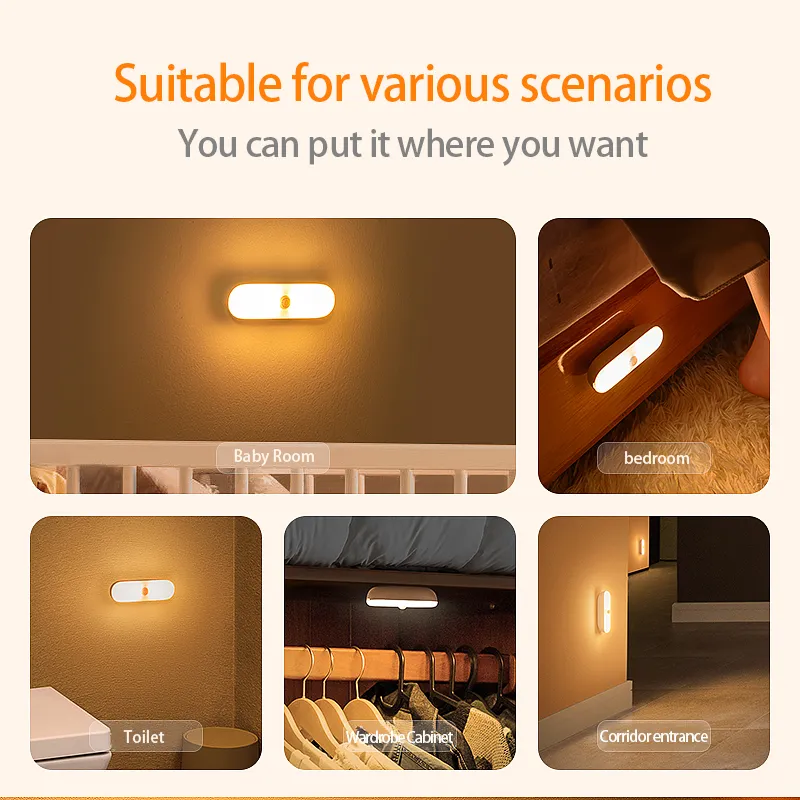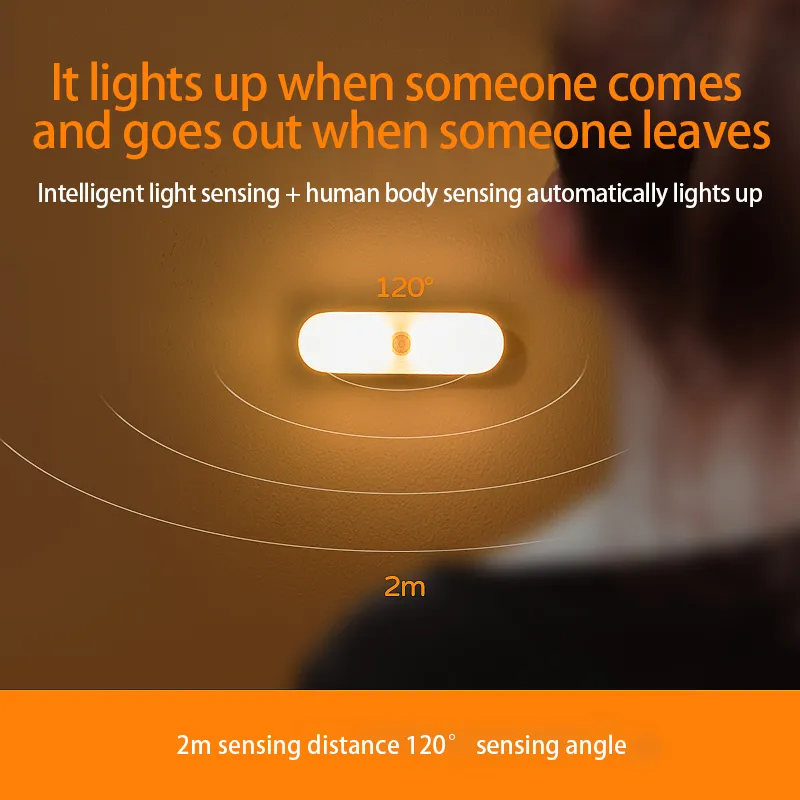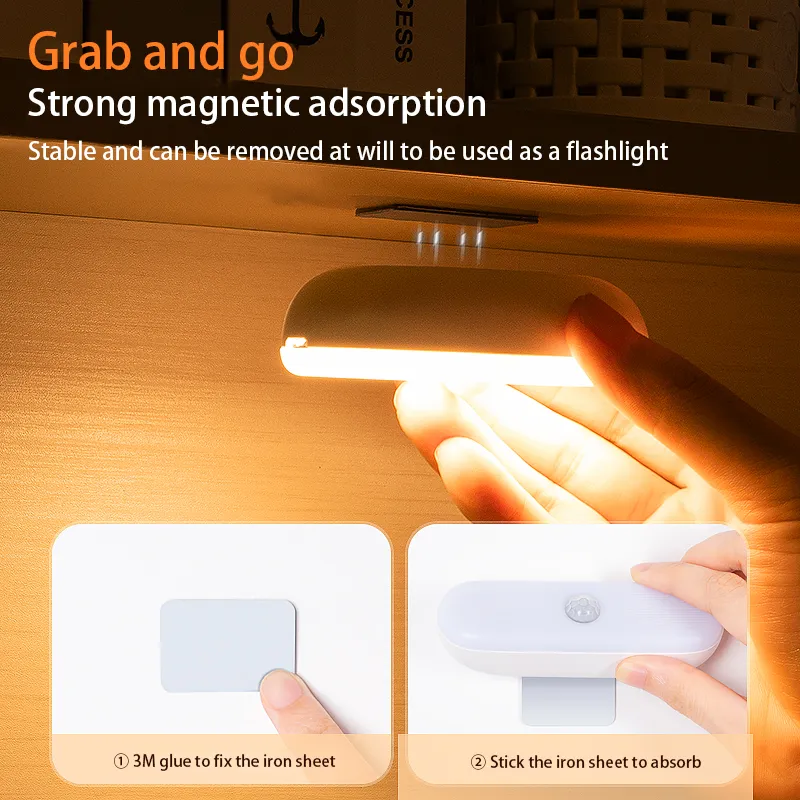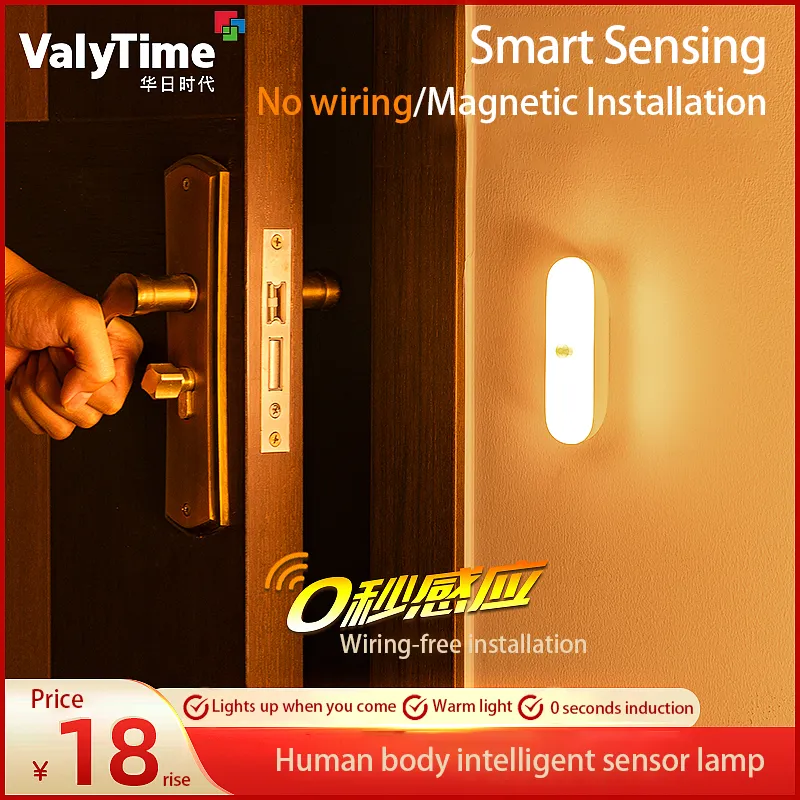Do motion sensor night lights have cameras?
Motion sensor night lights can sense changes in their surroundings and automatically turn on and off, providing a more convenient lighting experience while also increasing safety. With the continuous advancement of technology, many new smart devices have emerged on the market, some of which integrate multiple functions, leading consumers to wonder: Do motion sensor night lights have cameras?
Despite the rapid diversification and integration of smart home devices, motion sensor night lights and cameras are typically two separate devices with separate functions.
This article will explore the differences between motion sensor night lights and cameras in detail, analyzing the operating principles of motion sensor night lights, the functions of cameras, and how they can be integrated into smart homes. We will also discuss the potential and practical implications of combining these devices to answer the question, "Do motion sensor night lights have cameras?"

Definition of Motion Sensor Night Lights and Cameras
To clearly understand the relationship between motion sensor night lights and cameras, we first need to understand their functions and operating principles.
1. Motion Sensor Night Lights
A motion sensor night light is a lighting fixture with a motion sensor function. It uses a sensor to detect motion in the environment and then turns the light on or off. Common motion sensor night lights include infrared and microwave sensors. Both operate on similar principles, automatically activating or deactivating the light by sensing changes in motion in the surrounding environment.
• Working Principle: Motion sensors typically detect motion using infrared, microwave, or ultrasonic technology. When the sensor detects movement of a person or other object, it sends a signal that triggers a circuit, turning on the light. A key feature of this technology is that it requires no human intervention, thus improving convenience and energy efficiency.
• Features: Energy saving, automatic on/off, improved security, and suitable for installation in areas such as hallways, porches, and stairways, eliminating energy waste caused by forgotten lights.
2. Camera
A camera is a device used to capture visual images or video. It uses a sensor to convert light into electrical signals, forming images. These images can be stored, transmitted, or accessed remotely over a network. Cameras typically have a lens to capture image or video data, and many modern cameras offer features such as night vision and high-definition recording.
• Working Principle: Cameras use optical lenses and image sensors (such as CMOS or CCD sensors) to convert light into electrical signals, which are then converted into video or image data. Many modern cameras can also transmit live video data to remote devices via wireless networks.
• Functional Features: Real-time monitoring, security protection, data storage, and remote control. Cameras are widely used in various fields, including homes, businesses, and public security, helping users monitor activity in a specific area.

Functional Differences Between Motion Sensor Night Lights and Cameras
Although both motion sensor night lights and cameras play an important role in smart home systems, their functions differ fundamentally. Motion sensor night lights focus on controlling lighting, while cameras focus on capturing and recording images and video. The functional differences between the two are as follows:
1. Purpose and Function
The main purpose of a motion sensor night light is to control the on/off of lights based on motion in the environment, ensuring that lights are automatically turned on when needed, reducing unnecessary energy waste. Its primary focus is "light management."
The primary function of a camera is to capture images or video and store, monitor, or access them remotely. Its focus is "security monitoring."
2. Sensor Technology
Motion sensor night lights use infrared, microwave, or ultrasonic sensors to detect motion. When the sensor detects movement of a person or object, the light automatically turns on. Their technical design focuses on accurately and quickly sensing motion and triggering circuitry.
Cameras, on the other hand, rely on image sensors to capture light and convert it into images or video signals. Their technical design focuses on high-quality video capture and real-time transmission.
3. Installation Location and Application Scenarios
Motion sensor night lights are suitable for installation in hallways, doorways, stairways, and other areas where automatic lighting is required. Their primary function is to activate lights by sensing human presence, thereby enhancing the convenience and safety of living or working spaces.
Cameras are typically installed in locations requiring monitoring, such as doorways, windows, yards, or hallways, to help monitor people or objects entering the area. Their application scenarios are primarily focused on security.
4. Intelligence and Connectivity
Motion sensor night lights typically collaborate with other smart devices in smart home systems via wireless or wired connections. For example, they can integrate with smart dimming systems to automatically adjust light levels.
The intelligence of cameras is reflected in features such as remote monitoring, automatic alarms, and video storage. Many modern cameras also feature motion detection technology, sending push notifications to users upon detecting unusual motion.

Possible Integration of Motion Sensor Night Lights and Cameras
With the continuous advancement of smart home technology, many devices are integrating multiple functions. Consumers may wonder: Can motion sensor night lights be combined with cameras? In fact, while motion sensor night lights and cameras are generally two different types of devices, some devices that integrate the functions of both have already appeared on the market. These devices are often referred to as "smart camera lights" or "motion sensor night lights with cameras."
These integrated devices typically work by combining a motion sensor with a camera. When the motion sensor detects motion, it activates the camera to record or transmits the captured images to the user's smart device via the internet. Applications for these devices typically include security monitoring and intrusion alarms.
However, this integration is not a standard feature of motion sensor night lights. Most motion sensor night lights still function as independent lighting, while cameras are typically used as standalone devices. This is because their core functions and design goals differ: motion sensor night lights focus on illumination and energy conservation, while cameras primarily focus on image capture and security.

Why don't motion sensor night lights typically include cameras?
There are several main reasons why motion sensor night lights typically don't integrate cameras:
1. Functional Differences
The functions of motion sensor night lights and cameras are fundamentally different. The core task of a motion sensor night light is to control the on and off of the light source, while a camera is responsible for capturing and recording images and video. The hardware and software design requirements for each are distinct.
2. Cost and Complexity
Integrating a motion sensor and camera into the same device increases product manufacturing costs and design complexity. Motion sensor night lights typically require lower power consumption and a simpler design, while cameras require more image processing and storage capabilities. Achieving compatibility and integrated design between the two presents significant technical challenges.
3. Privacy Concerns
Many consumers prefer not to integrate cameras into lighting devices because they may raise privacy concerns. Although motion sensor night lights themselves don't have recording or monitoring capabilities, adding a camera could be misinterpreted as a surveillance tool, potentially raising privacy concerns.
4. Different Application Scenarios
The primary application for motion sensor night lights is home or office lighting, focusing on convenience and energy efficiency. Cameras, on the other hand, are primarily used for security monitoring and are more commonly used in public spaces or areas requiring long-term surveillance. Therefore, their requirements and usage environments differ.
Can Huari Lighting handles handle OEM/ODM requests?
Yes. Our factory has extensive experience providing customized LED solutions. Buyers can design their own night lights, wall lights, and panel lamps with specific colors, shapes, or logos. Huari offers fast production, competitive prices, and wholesale supply for large orders.
With CE and RoHS certifications, our products meet international quality standards. Customized manufacturing, factory-direct quotes, and promotional discounts make us a reliable Chinese supplier for brands seeking unique LED solutions.
